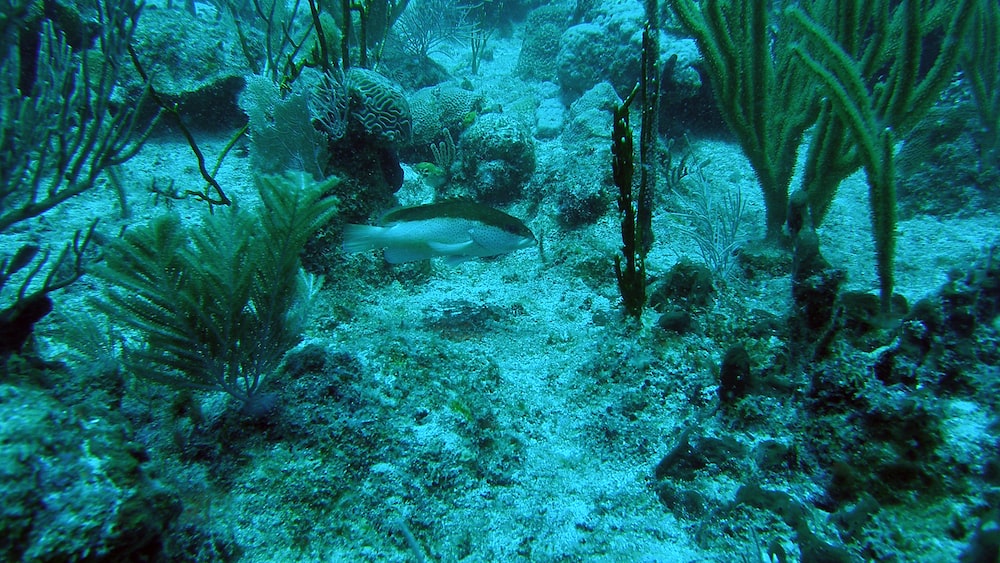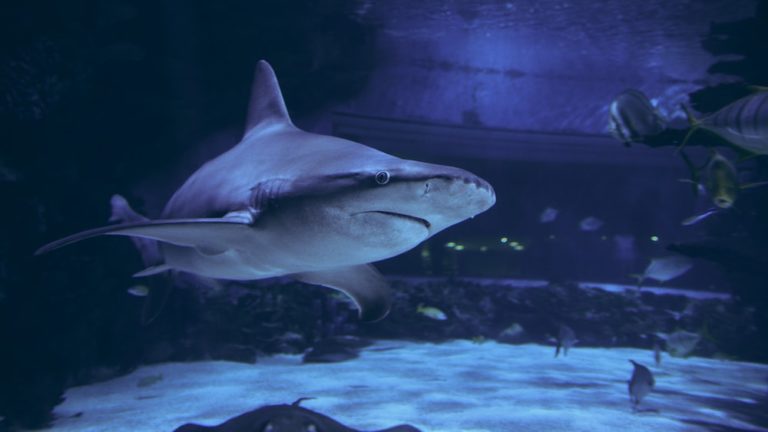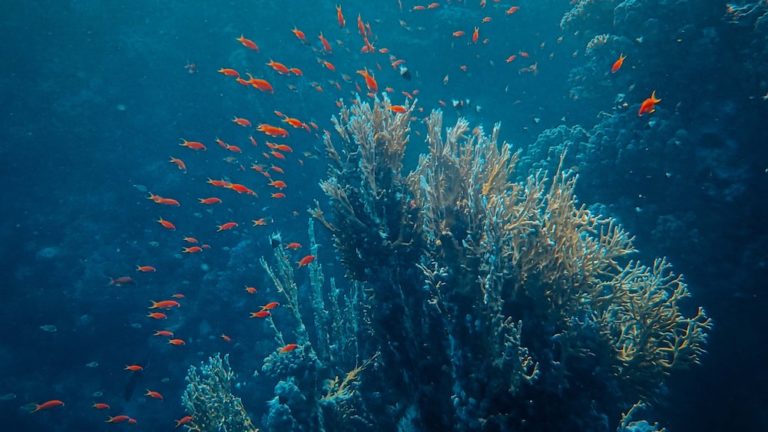Understanding The Taxonomic Classification Of Fish
Understanding The Taxonomic Classification Of Fish
Ahoy there, fellow ocean voyagers and devotees of the deep blue! Welcome to an aquatic odyssey where we’ll navigate the intricacies of the taxonomic classification of fish. This is not just a tale of scales and fins – no, we’re plunging into the very system that helps us understand the rich tapestry of marine biodiversity.
Key Points:
- Taxonomic classification of fish is crucial for understanding marine biodiversity.
- Taxonomy categorizes fish based on shared features, giving each species a unique identity.
- The hierarchical structure of fish taxonomy starts broad with the Kingdom Animalia and narrows down to individual species.
- Modern techniques, such as molecular methods and genetic analysis, have revolutionized fish taxonomy.
- Accurate taxonomic classification is important for fish conservation and fisheries management.
- The taxonomic classification of a fish species can change over time as new information surfaces.
As we dive deeper, you’ll gain a newfound appreciation for the complexities that lie beneath the ocean’s surface. Imagine each fish species as unique as a sea star’s arm, each contributing to the ecosystem’s delicate balance. So, don your snorkels and let’s embark on this journey of discovery and understanding, with a side of the occasional marine mirth!
For those who thirst for the knowledge of the briny deep, this educational pursuit is not to be taken lightly. We will grasp how scientists categorize these slippery denizens, from the jawless wonders of ancient seas to the sleek predators we fear and admire. Join me, as we unravel the mysteries of marine life, one classification at a time.
The Importance of Taxonomic Classification in Ichthyology
Dive into the fascinating world of ichthyology, and you’ll find that taxonomic classification is more than a mere academic exercise. It’s the North Star that guides ichthyologists through an ocean of diversity, allowing them to study and preserve fish species across the globe. Embark on this voyage and discover why understanding their place in the vast living library is crucial for any sea-life scholar.
Defining Taxonomy in the Context of Fish
Taxonomy, you might think, is just an ornate science term, but in the underwater realm, it’s as essential as a fish’s gills. For these aquatic animals, taxonomy is the methodical system that sorts them into groups based on shared features, much like organizing a treasure chest of diverse and glittering jewels.
This classification system gives each fish species a unique identity and place within the evolutionary tale of life underwater. Learning the ropes of taxonomic classification ensures that when you speak of, say, the great white shark, both novice explorers and seasoned marine biologists know precisely which sea-faring predator you mean.
Understanding taxonomy is like organizing a treasure chest of diverse and glittering jewels for aquatic animals, giving each fish species a unique identity and place within the evolutionary tale of life underwater.
The Historical Development of Fish Classification
The journey through the history of fish classification is an epic saga that stretches back centuries. The first efforts to categorize these finned animals began with simple observations of physical traits, akin to sailors mapping the stars to navigate boundless seas.
Over time, those rudimentary charts became more detailed, as naturalists like Carl Linnaeus cast the net wider, developing a hierarchical classification system that is still the backbone of the trade today. Under this system, our finned friends were no longer a mass of wriggling mysteries but an organized cornucopia of life that could be studied and understood by anyone with a curiosity as deep as the Mariana Trench.

The Hierarchical Structure of Fish Taxonomy
Setting off to explore the hierarchical structure of fish taxonomy is akin to scaling a submerged Mount Everest. It’s an ascent through a multi-layered classification system that starts broad with the Kingdom Animalia and narrows down to the individual species.
Kingdom and Beyond: The Higher Levels of Classification
Our taxonomic tale begins vast, at the Kingdom level, where fish are in grand company with all animals under the sun, from the tiniest ant to the colossal blue whale.
- Phylum follows, distinguishing fish by their spinal cord type, while
- Class further splits them based on key characteristics like their skeletons.
These levels serve as pivotal waypoints, guiding scientists through the rich tapestry of marine life and laying the groundwork for more granular classifications. They’re the blueprints to understanding life beneath the waves and are as valuable as a pirate’s treasure map.
Understanding the taxonomic levels of marine life is like following a treasure map for scientists, guiding them through the rich tapestry of underwater life.
Breaking Down the Fish Classes: Jawless, Cartilaginous, and Bony Fish
In the taxonomic classification of fish, three primary classes truly make a splash – jawless, cartilaginous, and bony fish. Let’s dip our fins into each class:
- Jawless fish, like the lampreys and hagfish of our aquatic anthology, boast a mouth sans jaws, reminiscent of ancient creatures from the world’s primordial pools.
- Cartilaginous fish, such as sharks and rays, glide through the waters with skeletons made of flexible cartilage, making them the acrobats of the ocean depths.
- Bony fish form the largest class, from the goldfish in your bowl to the majestic marlins piercing through the open sea – all sporting hardened skeletons.
These classes present the evolutionary narrative of our finned companions, showing adaptations that draw oohs and ahs as if they were underwater fireworks.
The Role of Morphology in Fish Taxonomy
The role of morphology in fish taxonomy is akin to an artist discerning fine strokes in a painting. It’s the meticulous examination of form and structure that allows scientists to unveil the family tree of fish species.

Anatomical Features Used in Classifying Fish
When it comes to the taxonomic classification of fish, anatomical traits are the stars of the show. Fin shapes, scale types, and gill structures are like the fingerprints of the fish world – unique identifiers that ichthyologists use to spot differences and similarities among sea dwellers.
Just as a connoisseur might evaluate the cut of a gem, specialists assess these features to determine how fish species are related. These bodily characteristics paint a vivid picture of how each species fits into the maritime mosaic.
Behavioral and Habitat Considerations in Classification
Beyond the physical lies the dance of life – behavior and habitat also sway the classification of a fish. Like a samba under the sea, the way a fish interacts with its environment or performs its daily tango can tell us much about its taxonomic place.
- Behavioral patterns such as migratory habits and breeding practices are the rhythmic beats ichthyologists listen to.
- The habitats they call home, from coral-reefed ballrooms to the solitary depths of the open ocean, set the stage for their role in the ecosystem.
Together, these considerations act as vital cogs in piecing together the grand taxonomy puzzle, granting each fish species its rightful nook in the ocean’s library.
The behavior and habitat of a fish play a significant role in determining its taxonomic classification, offering valuable insights into its place in the ecosystem.
Modern Techniques in Fish Taxonomy
Modern techniques in fish taxonomy are very much the submarines to our deep-dive into the classification of these animals. They allow for exploration beyond what the naked eye can observe, revealing layers of complexity within every gill and fin.
Molecular Methods and Genetic Analysis
A leap from traditional to modern, molecular methods and genetic analysis have revolutionized the classification system like the invention of the compass changed navigation. DNA sequencing has become the ichthyologist’s best friend, surfacing details of fish kinship buried deep in genetic codes.
At this molecular leve, things get really interesting. Just as social media connects people across continents, genetic links can connect disparate fish species, unveiling unknown relationships and rewriting animal ancestry.
The Impact of Technology on Taxonomic Methods
The ocean of fish taxonomy has been stirred by the tsunami of technology, washing ashore tools that redefine the boundaries of the classification of these creatures. Imaging technologies and computer algorithms now sift through data like sand through a sieve, identifying new species at a pace that would make Darwin’s head spin.
Digital databases act as the virtual aquariums of knowledge, archiving the minutiae of the fish world into accessible troves. And thus, stepping through the silicon threshold, taxonomy enters a realm of precision unattainable in times when the sextant ruled the seas.
Case Studies in Fish Taxonomy
Dive into the oceanic library of fish taxonomy, and you’ll find not just facts and figures, but stories – narratives that encapsulate the evolving journey of taxonomists as they navigate through the vast sea of species. These case studies tell tales of triumph and challenge, moments where taxonomic classification becomes more than just a scientific exercise, but a deeply intricate detective story where each clue leads to a greater understanding of our finned friends.

Taxonomic Challenges and Resolutions
Taxonomy, like a charted map of the unknown, often comes with its own set of challenges. One notable hurdle is the discovery of a species that exists on the borderline between established categories, like certain species_list members that share characteristics with both ground sharks and frilled and cow sharks. Another issue springs from historical data discrepancies, where ancient texts and modern techniques clash in their descriptions of species. Researchers must navigate these murky waters, combining meticulous study of gills and fins with modern genetics to create a species profile that truly reflects nature’s blueprint.
The process can be as turbulent as an ocean storm, but resolutions do come forth. For example, advancements in molecular biology have aided in clarifying the taxonomic standing of various enigmatic species, ironing out wrinkles in the classification fabric. Taxonomists continuously update the species_list as new findings shed light on ancient confusions and provide insights, reinforcing the concept that taxonomy is a living, breathing discipline, just like the subjects it classifies.
Navigating the challenges of taxonomy involves reconciling discrepancies between historical and modern data and utilizing advancements in molecular biology to clarify the taxonomic standing of enigmatic species.
Notable Taxonomic Revisions in Ichthyology
Throughout the annals of ichthyology, we’ve witnessed several revisions that changed the way we view our watery companions. One such monumental shift occurred when molecular studies led to the reclassification of certain species within the shark family, elevating the taxonomic position of both ground sharks and a motley crew of frilled and cow sharks. This was akin to a reshuffling of an oceanic deck of cards, with each species finding a new place in the natural hierarchy.
Another remarkable taxonomic adjustment graced the field when the labyrinths of DNA analysis unveiled new relationships among coral-dwelling fish, prompting a reorganization of species previously thought to be close kin. These revelations demonstrate that the taxonomic classification of fish is as dynamic as the ocean’s currents, always flowing towards a truer depiction of the natural world.
Conservation and Taxonomy
The interplay between conservation and taxonomy is as intricate as the patterns on a mandarinfish – it’s essential for addressing the ecological puzzle. Without the precise naming and grouping of species, efforts to conserve marine life would be like sailing without a compass – directionless and doomed to fail.
How Taxonomic Classification Affects Conservation Efforts
Taxonomic classification of fish is a cornerstone for conservation efforts, providing a framework around which protection strategies can be tailored. An accurate list of species forms the backbone of any conservation plan, enabling scientists and policymakers to identify those in dire need of protection. For instance, knowing that certain gills are unique to a species might signal its vulnerability and the urgent need to conserve its habitat.
Moreover, taxonomy aids in tracking the health of fish populations. When certain species_list members become threatened, it sounds an alarm that eco-adventurers and conservationists can’t ignore. It marks the spot on our environmental map that says, “Here be dragons,” beckoning us to take action to protect those dragons – or, more scientifically put, those precious species in our marine treasuries.
An accurate list of species forms the backbone of any conservation plan, enabling scientists and policymakers to identify those in dire need of protection.
The Role of Taxonomy in Fisheries Management
Fisheries management relies on the scaffolding of taxonomy to effectively monitor, assess, and sustain fish stocks. The concept of species identification is more than academic – it’s the bedrock of sustainable fishing practices. A meticulous categorization of species ensures that regulations are specific and enforceable, discouraging overfishing and supporting the balance of marine ecosystems.
For example, understanding the unique breeding habits and life cycles of different species_list members allows for the implementation of size limits and seasonal fishing bans to protect spawning adults – a science-driven approach bolstered by the discipline of taxonomy. This knowledge is pivotal; it’s our lifeline to preserving the diversity and vitality of the ocean’s bounty for future generations to feast their eyes upon, not just their appetites.
FAQs
1. What are the main classes of fish in taxonomic classification?
The main classes of fish in taxonomic classification are Agnatha (jawless fish), Chondrichthyes (cartilaginous fish, including sharks and rays), and Osteichthyes (bony fish). These broad categories serve as a starting point for diving deeper into the fascinating underwater world of fish diversity.
2. How has molecular genetics influenced the taxonomic classification of fish?
Molecular genetics has profoundly shaped the taxonomic classification of fish by providing a more detailed understanding of genetic relationships, which allows for a more precise and sometimes revised positioning of species within the taxonomic hierarchy. It’s akin to fine-tuning a high-definition image of the living aquatic tapestry.
3. Why is accurate taxonomic classification important for fish conservation?
Accurate taxonomic classification is vital for fish conservation as it ensures that conservation measures are correctly focused on the right species, preventing inadvertent neglect of vulnerable groups. It serves as a navigational tool in the vast ocean of conservation efforts.
4. Can the taxonomic classification of a fish species change over time?
Yes, the taxonomic classification of a fish species can change over time as new information surfaces about genetic makeup, evolutionary history, and inter-species relationships, showcasing the adaptive and responsive nature of taxonomy to emerging data.
Conclusion
As we surface from the depths of taxonomic intricacies, we see a clearer picture of the essential bond between classification, conservation, and the effective management of our aquatic resources. Taxonomy, with its penchant for order and precision, gives us a map charting the taxonomic classification of fish across the vast waters of our blue planet.
Realizing the pivotal role of taxonomy in the grand scheme of marine conservation, it’s clear that knowing a fish by its proper name is more than just a formality – it’s a crucial step in safeguarding the future of marine biodiversity. And as eco-adventurers and stewards of the sea, it is incumbent upon us to keep abreast of these classifications, using them as a compass to guide our conservation efforts.
At the brink of goodbye, consider this: our relationship with the ocean’s denizens is symbiotic. We chart their courses, marvel at their adaptations, and in return, they offer us a glimpse into life’s incredible tapestry. Until next time, let’s keep our minds as open as the seas, ready to embrace new tales of taxonomy and conservation. Swim on, dear readers, and treasure each ripple of knowledge in this oceanic journey.
Warm currents and fond farewells, Jasper Flynn







